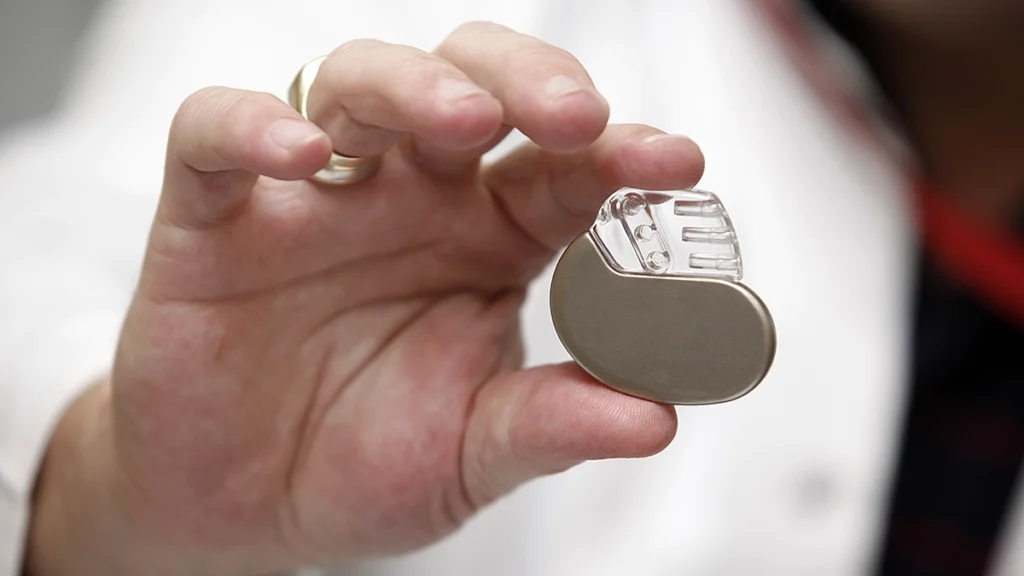Curious about advancements in heart health? Explore the evolution and impact of pacemakers today.
Let’s Set the Pace: What is a Pacemaker?
Pacemakers are implantable cardiac devices that play a crucial role in Cardiac Rhythm Management (CRM), offering hope to individuals with heart rhythm disorders. This technology, sophisticated and impactful, has significantly advanced patient care and improved the lives of many. Pacemakers have evolved drastically from their inception to today’s advanced technology, and the field of cardiology has made strides in bridging the gap between specialist expertise and general understanding.
The Heartbeat of Innovation: A Brief History
The evolution of pacemakers from an experimental concept to a life-saving device highlights human innovation. Introduced in the 1950s, the first pacemakers were cumbersome and external, hinting at the potential of electronic heart pacing. Today, pacemakers are compact, minimally invasive, and integrate with the body’s rhythms, illustrating continuous and novel advancements in CRM technology.
Understanding the Beat: What Pacemakers Do
At its core, a pacemaker is a device implanted under the skin, typically near the collarbone. Its mission is to send electrical impulses to the heart, ensuring it maintains a regular rhythm. For those with conditions like arrhythmias, where the heart beats too slowly, pacemakers can be life-altering, ensuring their heart continues to beat at a normal pace. In cases such as these, it acts as a much-needed safety net to their underlying rhythm.
Key Benefits: Beyond the Beat
The advantages of pacemaker technology extend far into enhancing quality of life and patient care:
- Restored Regularity: Pacemakers correct irregular heart rhythms, enabling patients to enjoy a more active lifestyle without undue fatigue or discomfort.
- Prevention of Heart Complications: By maintaining a steady heart rate, pacemakers play a critical role in preventing heart failure and other related conditions.
- Empowering Patients: With a pacemaker, patients gain control over their health, reducing hospital visits and dependence on emergency care.
The Procedure: What to Expect
Implanting a pacemaker involves a minimally invasive surgical procedure, generally completed within a few hours under local anesthesia or light sedation. The process includes:
- Insertion: A small incision is made near the collarbone to place the body of the pacemaker, often called the generator or can.
- Lead Placement: Thin wires, or leads, connect the device to the heart, ensuring electrical impulses are accurately delivered.
- Testing and Closure: The device is tested to confirm optimal operation, followed by closing the incision.
Navigating Recovery: After the Procedure
Recovery post-pacemaker implantation is a journey marked by milestones:
- Initial Recovery: Patients may experience slight discomfort and are advised to avoid strenuous activities for a short period. Avoiding showers, baths, and swimming for a short period following implantation is generally advised.
- Wound Check and Device Assessment: Shortly after the procedure, the implantation site is checked for proper healing and absence of infection. The pacemaker’s function is assessed to ensure it’s working correctly as it begins to integrate with the body.
- Follow-up Checks: Regular appointments ensure the pacemaker functions correctly and adjusts to the patient’s activity levels.
- Long-term Care: With proper care and monitoring, pacemakers can last several years, after which a replacement of the battery might be necessary. Subsequent battery-change procedures are generally less invasive than the initial implantation.
Considerations and Limitations
While pacemakers signify a leap forward in treating heart rhythm disorders, they come with considerations:
- Device Interference: Certain electronics and medical procedures may interfere with pacemaker function, requiring caution.
- Lifestyle Adjustments: Patients may need to modify activities or habits to accommodate the device, though most lead normal, unrestricted lives.
- Community Support: Post-pacemaker adjustment is supported by patient groups, online forums, and rehab programs. These communities offer a space to share experiences and receive encouragement, helping individuals navigate the changes and challenges of life with a pacemaker. Engaging with others in similar situations fosters a sense of belonging and provides practical advice for adapting to a new normal.
Your Heart, Your Health: Taking the Next Step
If you or someone you love might benefit from the life-changing impact of a pacemaker, consulting with a healthcare professional is the first step. Dr. Adam Budzikowski and his team are prepared to guide you towards improved cardiac health with personalized care.
Pacemakers are a significant advancement in medical technology, offering individuals a chance at a better, more active life. By adopting this technology, we move towards a future where heart rhythm disorders are a manageable part of our health, not a limitation.
CRR
